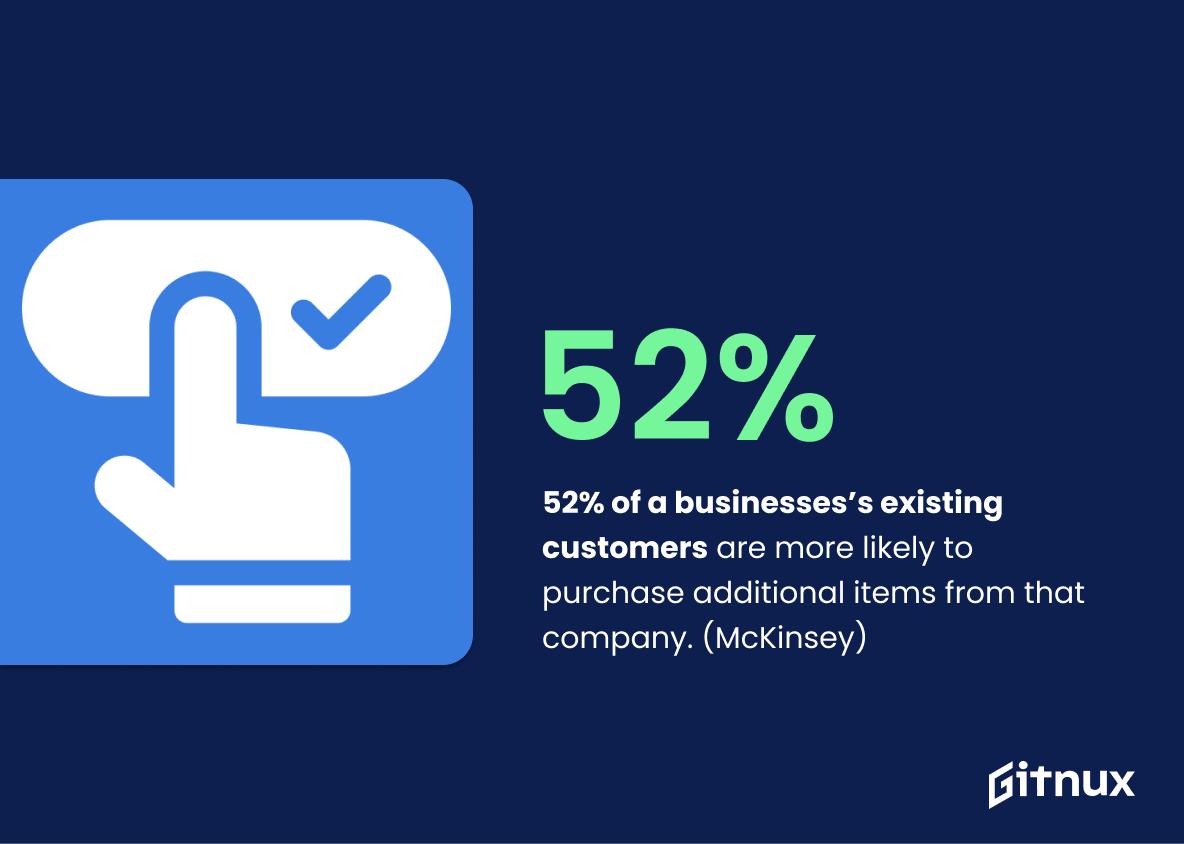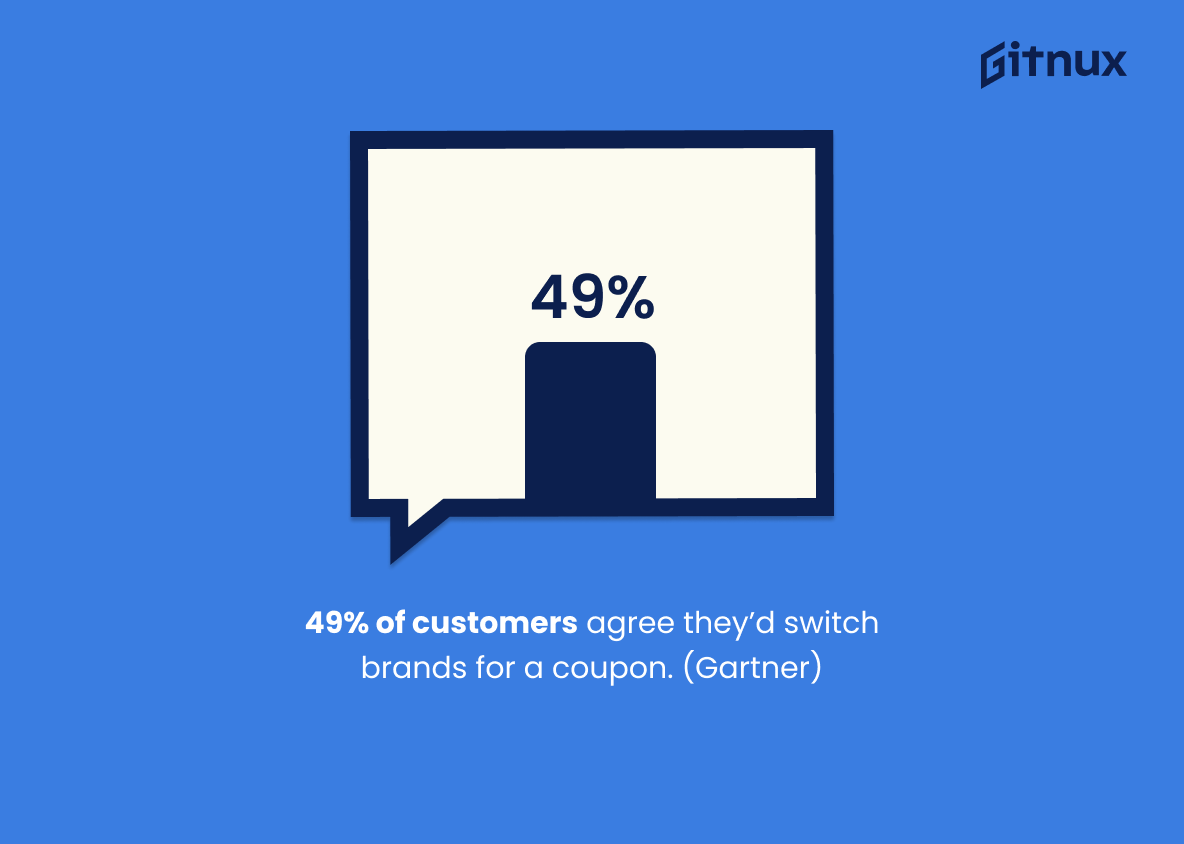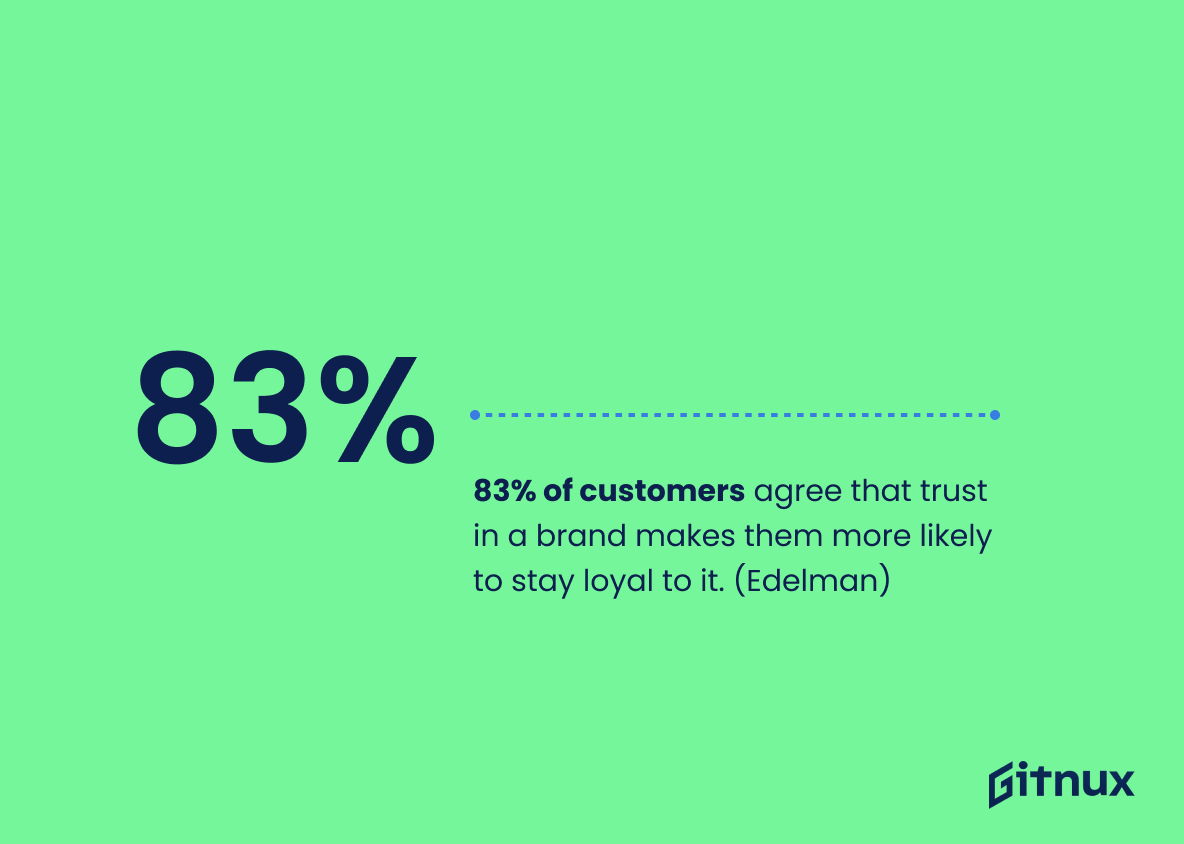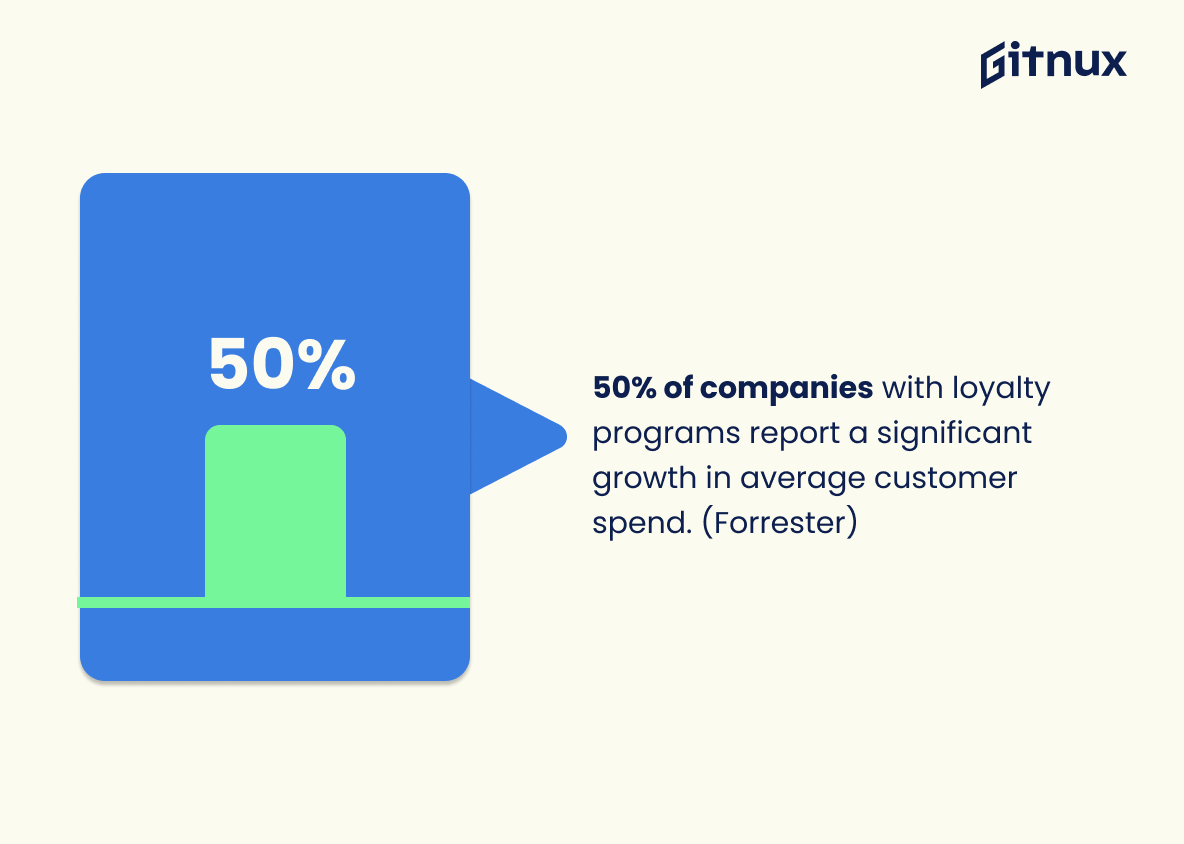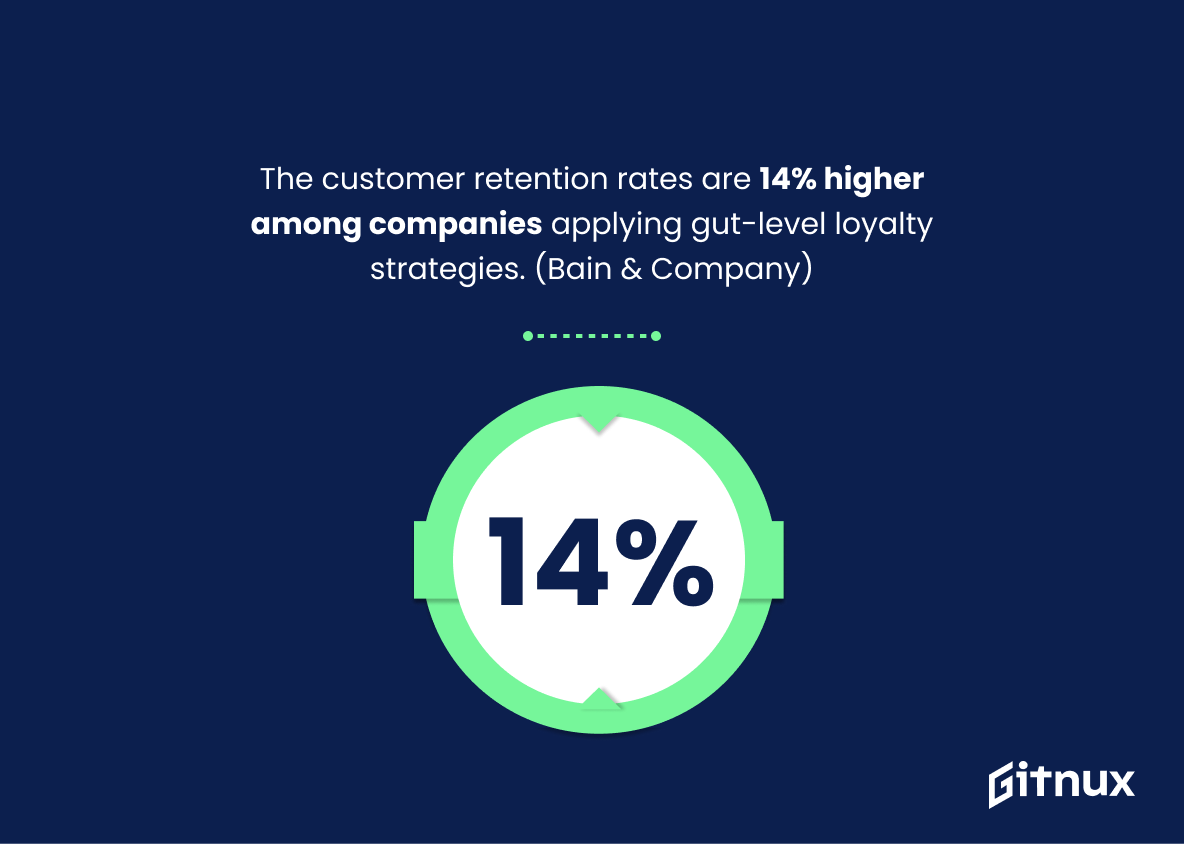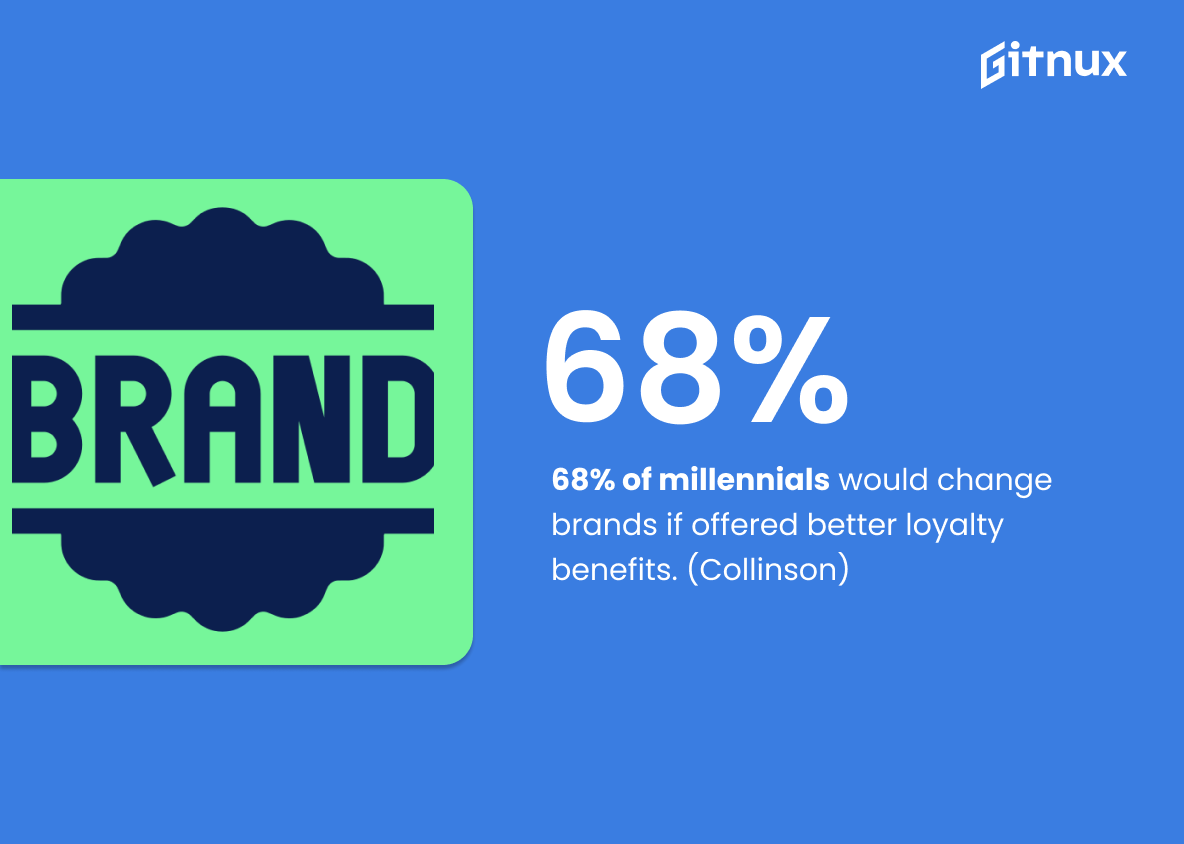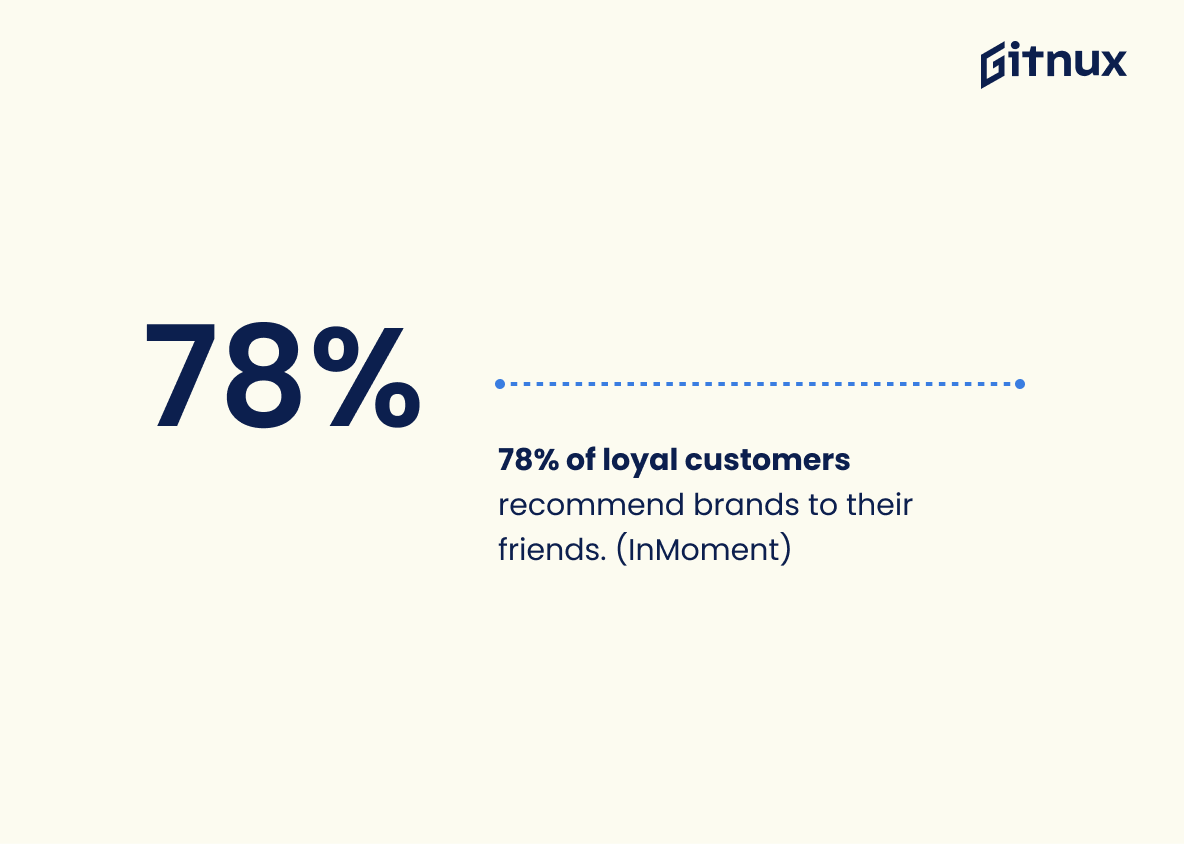In today’s ultra-competitive business landscape, the key differentiator does not solely rely on the quality of your products or services, but it lands significantly on the loyalty of your customers. Customer loyalty has become an undeniably important metric in assessing the health and potential of a business. But how do we measure this precious commodity? In this blog post, we delve into the intriguing world of customer loyalty statistics, highlighting why understanding them is crucial to your business growth.
We will navigate through the sea of numbers, breaking down the data to generate insightful trends and strategies that resonate with your target audience, ultimately driving customer retention and loyalty. So are you ready to dive deeper and uncover the valuable insights these statistics hold? Let’s embark on this information-rich journey together.
The Latest Customer Loyalty Statistics Unveiled
52% of a businesses’s existing customers are more likely to purchase additional items from that company. (McKinsey)
Imagine a business as a ship on a long and arduous voyage. Now, think of customers as the wind in the sails, pushing the vessel towards success. With 52% of existing customers, according to McKinsey, being more likely to purchase additional items, the gush of that proverbial wind just amplifies. In the realm of customer loyalty statistics, these valuable clients personify a highly profitable windfall.
They don’t just purchase once but come back again and update their shopping carts, illustrating commitment and trust in the quality and service of the company. This strong likelihood of repeat purchases from existing customers paints a vibrant picture of a firm’s customer retention, showcasing a strong, loyal clientele base as one of the most promising harbingers of business growth.
49% of customers agree they’d switch brands for a coupon. (Gartner)
Unveiling the transformative power of discount offers, this statistic uncovers a pivotal inclination in consumer behavior. With almost half of the customers confessing their readiness to switch brands for a coupon, the statistic underlines an exquisite challenge for businesses desiring to foster customer loyalty.
It highlights a paradynamic shift where customer loyalty is no longer nailed down to product quality or brand reputation alone, but is constantly responsive to price incentives. It undoubtedly becomes a call to action for companies to rethink their marketing strategies and loyalty programs in a world where discounts and coupons can potentially jeopardize brand allegiance.
83% of customers agree that trust in a brand makes them more likely to stay loyal to it. (Edelman)
Unveiling the intriguing implications of this statistic, it illuminates that brand trust is the backbone of customer loyalty, asserting its commanding influence over 83% of consumers’ fidelity. This pulsating fact, unearthed by Edelman, serves as a compass for businesses navigating the complex terrain of customer interactions and brand relationships, underscoring the value of fostering trust to cement customer loyalty.
In essence, it harmonizes the voices of 83% of customers, creating a symphony of brand trust that echoes the keynotes of loyalty, adding a significant tone to any discourse on Customer Loyalty Statistics.
50% of companies with loyalty programs report a significant growth in average customer spend. (Forrester)
Peeling back the layers of ‘50% of companies with loyalty programs report a significant growth in average customer spend’ reveals a profound fact: loyalty programs aren’t just a value-add, they’re a catalyst for growth. They’re the engines driving not only customer retention but also increased customer spend. In this dance of numbers, ever-evolving consumer behavior is being harnessed by businesses wisely leveraging loyalty programs – ultimately driving profitability.
This statistic becomes a key actor in our narrative explaining the transformative power of customer loyalty, serving as numerical testimony to the financial benefits wrapped up in customer loyalty programs. The statistic forms a bridge connecting theoretical strategizing and real-world profitability. Within the storyline of a blog post on customer loyalty statistics, this number takes center stage, teeming with implications for businesses searching for innovative ways to grow.
The customer retention rates are 14% higher among companies applying gut-level loyalty strategies. (Bain & Company)
Delving into the intriguing world of Customer Loyalty Statistics, one treasure of a statistic stands out – a 14% increase in customer retention rates among companies implementing gut-level loyalty strategies, as per Bain & Company. This statistic paints an engrossing narrative of the direct impact creative loyalty strategies can have for businesses. It attests to the power of going beyond traditional rewards programs, recognizing that to capture customer loyalty, an emotional connection, a ‘gut-level’ bond becomes imperative.
Be it a small scale start-up or a global enterprise, this increase in retention marks significant potential for return on investment and long-term survivability in a competitive business landscape. This data point, nestled amidst a multitude of statistics, reassures businesses that taking a leap into the realm of emotion-based strategies doesn’t simply appeal to the heart but also significantly bolsters the bottom line. In the sprawling tapestry of customer loyalty, it’s clear – trust your gut, soar to new retention heights.
68% of millennials would change brands if offered better loyalty benefits. (Collinson)
In the realm of customer loyalty statistics, the notion that 68% of millennials would switch brands for superior loyalty benefits serves as a critical compass for business strategy. This statistic shines a spotlight on the fact that mere brand recognition or product quality isn’t sufficient anymore. It portrays a clear picture of an evolving marketplace where millennials – a key segment of consumers – don’t just seek value for money, but also value for loyalty.
Additionally, this invites businesses to creatively redesign their loyalty programs, ensuring their offerings resonate with millennial consumers. This statistic stands as a call to action, an invitation for brands to not only re-evaluate the efficacy of their existing loyalty programs, but to also recognize and harness the potential of advanced loyalty benefits as potent tools for customer retention.
80% of a company’s future revenue comes from just 20% of its existing customers. (Gartner)
In the frontier of customer loyalty, the significance of the relationship between a company and its customers is vividly illustrated through this eye-opening statistic- 80% of a company’s future revenue stems from just 20% of its current clientele (in accordance with Gartner). This is no trivial detail, but a reflection of loyal customers acting as potent catalysts in driving future profitability.
The allure of this figure not only underlines the growing importance of cultivating strong, loyal customer relations, but also shines a spotlight on the potential missed opportunities when companies fail to nurture this crucial 20%. As such, this statistic should serve as a constant reminder how the seeds of future prosperity are often sown not in the vast fields of potential new clients, but within the fertile soil of existing ones. It stresses the value of customer loyalty, reinforcing it as a pivotal element within a company’s strategic planning toolkit.
78% of loyal customers recommend brands to their friends. (InMoment)
Picture this – nearly four out of five of your faithful customers turn into brand ambassadors, sharing their positive experiences and recommending your business to their personal networks. This statistic from InMoment puts a spotlight on the incredible multiplying power of customer loyalty. In the context of a blog post about customer loyalty statistics, it serves as a linchpin, unraveling how indispensable loyal customers are in painting a positive brand image, extending market reach, and ultimately driving business growth.
This percentage is a testimonial to the potential returns on investing in customer loyalty- acquiring new customers courtesy of existing ones, at zero additional cost. The ripple effect of these recommendations could spur a cycle of loyalty, creating even more dedicated customers and transforming the brand’s customer base beyond what traditional marketing efforts can achieve. So, it’s no mere statistic – it’s a strategic insight into the potency of customer loyalty.
65% of a company’s business comes from existing customers. (Small Business Trends)
Lighting up the importance of customer retention, an astounding 65% chunk of a company’s business stems from its existing customers, according to Small Business Trends. Such a considerable proportion translates to the existence of a loyal customer base. It emphasizes the critical role they play to sustain and fuel a company’s revenue engine.
This striking number gives credence to the growing power of customer loyalty in the business landscape. It reinforces the argument that nurturing relationships with existing customers can be a goldmine for sustainable growth. Therefore, businesses striving towards thriving profits should prioritize customer loyalty strategies, turning this valuable statistic into a profitable reality.
In the realm of a blog post about Customer Loyalty Statistics, this fact acts like a glowing lighthouse, guiding business owners, marketers, and decision-makers towards the shores of profitable decision making. After all, the proof is in the numbers- a loyal customer base plays a vital role in a successful enterprise.
It can cost five times more to attract a new customer than it does to retain an existing one. (Invesp)
Delving into the heart of the numerical maze, the potency of this particular statistic is underlined by its illumination of the economic wisdom of customer retention. In a blog post about Customer Loyalty Statistics, this fact serves as a financial torchlight spotlighting the undeniable monetary advantage of fostering customer loyalty. When it states that attracting a new customer can cost up to five times more than retaining an existing one, it stealthily uncovers the jewel of insight that maintaining the happiness and satisfaction of current customers isn’t just a feel-good approach—it’s a highly economical strategy.
This is not merely a piece of trivia; rather, it is a warning flare for businesses navigating the treacherous waters of customer acquisition and management. It prompts them to shift their focus, funds, and efforts towards retaining their current clients, thus spotlighting why statistics on customer loyalty are both essential and powerful in reshaping business strategies.
Only 18% of companies believe they have the skills necessary to gather and use insights effectively for customer loyalty. (Forrester)
Unveiling this statistic casts a spotlight on a stark challenge faced by the corporate world – a significant 82% of companies feel inadequate in employing vital skills to capitalize on insights for customer loyalty. Highlighting this shortfall, where only a mere 18% of companies stand confident, prompts a deeper examination on the indispensable role of effective data gathering and insight utilization.
Grappling with such sophistication could dramatically steer customer loyalty, an evident testament to the very essence of this statistic. This points towards an increasing need for businesses to recalibrate their skillsets, an angle that we could progressively explore in following sections of our blog post on Customer Loyalty Statistics.
76% of consumers are more likely to trust content shared by their peers rather than content shared by brands for loyal consumership. (Adweek)
In the terrain of customer loyalty, this statistic is an illuminating beacon, a testament that customers have shifted faith from branded content pillars to trust more the shared content from their kindred consumers. With an overwhelming 76% consumers solidifying their trust in peer-shared content, it becomes crucial for brands to grasp this paradigm shift, outlining this in a blog post on customer loyalty statistics.
This enkindles a sense of camaraderie and authenticity, two key factors instrumental in building fertile grounds for customer loyalty. Diving deeper, it also unveils the potential of user-generated content and word-of-mouth marketing that could organically sprout from customers’ trust in peer-shared content, thereby creating a snowball effect of loyalty towards the brand.
Improving customer retention by just 5% boosts profits by 25% to 95%. (Harvard Business School)
Painting a compelling portrait on the canvas of Customer Loyalty Statistics, the remarkable correlation between customer retention and amplified profits gleams like a spotlight in a dimly lit theater. Profoundly emphasized by Harvard Business School, an enhancement as small as a 5% in customer retention can supercharge profits by a staggering 25-95%.
This statistic is the magic key that can unlock the treasure chest of profitability any business aspires to achieve. Why so? Each retained customer transforms into a recurring revenue source, carving a direct, cost-efficient path to escalating profits. Furthermore, existing customers tend to spend more than new clientele. Plus, the cost of acquiring a new customer can be about five times more than retaining an existing one.
So, as we venture deeper into the exploration of Customer Loyalty Statistics in this blog, let’s contemplate this awe-inspiring link between customer retention and profitability. This could potentially act as a beacon, guiding businesses to strategize customer loyalty programs ingeniously, aiming at cementing relationships with their existing customer base, thereby boosting their profit margins.
Conclusion
Customer loyalty remains an underexplored goldmine with vast potential in today’s business ecosystem. As the statistics we’ve reviewed confirm, loyalty significantly boosts profitability, while simultaneously reducing operational costs. In an era where acquiring new customers is increasingly expensive and competitive, fostering customer loyalty is paramount.
Businesses must therefore prioritize establishing effective loyalty programs, refining customer experiences, and keeping their products or services top quality. Leveraging data and understanding these customer loyalty statistics is not just beneficial, but essential to thrive and stay ahead in the market.
References
0. – https://www.www.invespcro.com
1. – https://www.go.forrester.com
2. – https://www.hbswk.hbs.edu
3. – https://www.www.bain.com
4. – https://www.www.inmoment.com
5. – https://www.www.adweek.com
6. – https://www.www.forrester.com
7. – https://www.www.gartner.com
8. – https://www.www.collinsongroup.com
9. – https://www.smallbiztrends.com
10. – https://www.blogs.gartner.com
11. – https://www.www.edelman.com
12. – https://www.www.mckinsey.com
